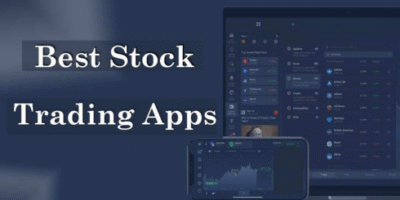Trading in financial markets can be a thrilling experience, especially when dealing with commodities like gold. One of the most popular ways to trade gold is through Contracts for Difference (CFDs). Gold CFD trading allows investors to speculate on the price movements of gold without actually owning the physical metal. This brings us to a critical aspect of trading: leverage and margin.
Leverage is a financial term that refers to the use of borrowed funds to increase the potential return of an investment. In the context of gold CFD trading, leverage allows traders to control a larger position in gold with a smaller amount of capital. This can amplify both gains and losses, making leverage a double-edged sword.
Understanding Margin Requirements Margin is essentially a good faith deposit that traders must put up to open a position in gold cfd. It serves as a guarantee to the broker that the trader can cover potential losses. The margin requirement is a percentage of the total value of the trade and is determined by the broker. For instance, if the margin requirement is 1%, a trader would only need to put up $1 for every $100 of gold they wish to control in the market.
The Role of Leverage in Gold CFD Trading Leverage plays a significant role in gold CFD trading as it determines how much you can trade with a given amount of capital. A higher leverage ratio means you can control a larger position in gold with less capital. However, it also means that small market movements can lead to significant gains or losses. Traders must be aware of the risks associated with high leverage and should only use it when they are comfortable with the potential outcomes.
Managing Risk with Stop Loss Orders One of the most effective ways to manage risk in gold CFD (In Taiwan, it is called “黃金 cfd“) trading is by using stop loss orders. A stop loss order automatically closes your position if the market moves against you by a predetermined amount. This can help limit your losses and protect your capital. It’s essential to set realistic stop loss levels that take into account market volatility and your risk tolerance.
The Impact of Market Volatility on Leverage and Margin Market volatility can have a significant impact on leverage and margin in gold CFD trading. During periods of high volatility, the price of gold can move rapidly, which can lead to margin calls if your position moves against you. A margin call occurs when the value of your position falls below the required margin level, and you must either add more capital or close your position. High volatility can also increase the risk of stop out, where your position is closed due to insufficient margin.
Strategies for Trading Gold CFDs with Leverage When trading gold CFDs with leverage, it’s essential to have a well-defined strategy. This should include setting clear entry and exit points, managing your risk with stop loss orders, and being aware of the impact of market volatility on your position. Traders should also consider diversifying their portfolio to spread risk and not rely solely on gold CFDs.
The Importance of Market Analysis Market analysis is crucial when trading gold CFDs. Traders should keep abreast of global economic news, geopolitical events, and central bank policies, as these can all influence the price of gold. Technical analysis can also be useful in identifying trends and potential entry and exit points. By combining fundamental and technical analysis, traders can make more informed decisions about when to enter or exit a gold CFD position.
The Role of Brokers in Gold CFD Trading Brokers play a vital role in gold CFD trading. They provide the platform through which traders can access the market, and they set the margin requirements and leverage ratios. It’s essential to choose a reputable broker with competitive fees and a good track record. Traders should also consider the broker’s customer service and the range of tools and resources they offer to help with trading decisions.
Regulation and Safety in Gold CFD Trading Regulation is an important consideration when choosing a broker for gold CFD trading. Regulated brokers are subject to strict rules and oversight, which can provide an additional layer of protection for traders. It’s also important to ensure that the broker segregates client funds from their own, which helps protect your capital in the event of broker insolvency.
The Future of Gold CFD Trading The future of gold CFD trading looks promising, with increasing numbers of investors seeking alternative investments to traditional assets. As the global economy continues to evolve, gold remains a popular hedge against inflation and economic uncertainty. Traders who understand the risks and rewards of gold CFD trading, and who use leverage and margin effectively, can potentially benefit from this trend.
Conclusion Gold CFD trading, with its use of leverage and margin, offers exciting opportunities for investors looking to speculate on the price of gold. However, it’s essential to understand the risks involved and to manage your positions carefully. By using stop loss orders, diversifying your portfolio, and keeping up with market analysis, you can potentially maximize your returns while minimizing your risks. Remember, the key to successful trading is knowledge, discipline, and a well-thought-out strategy.










Leave a Reply
You must be logged in to post a comment.